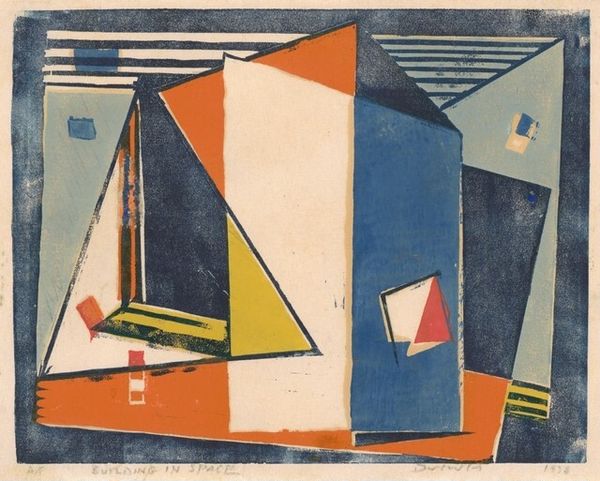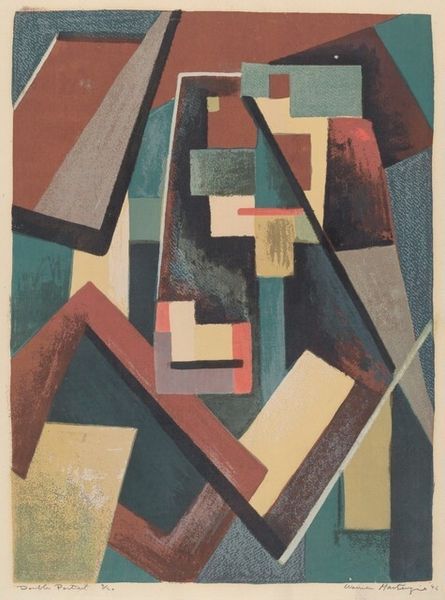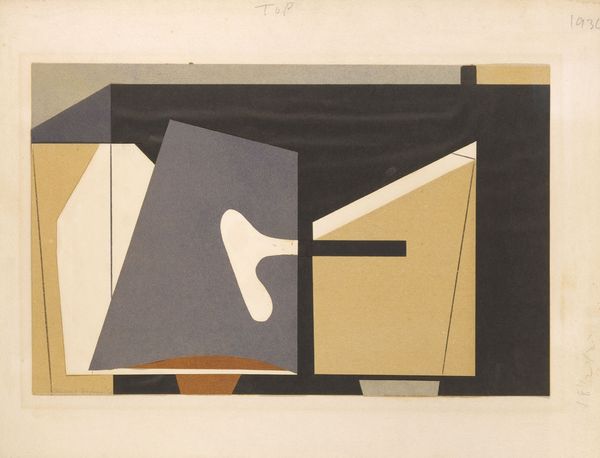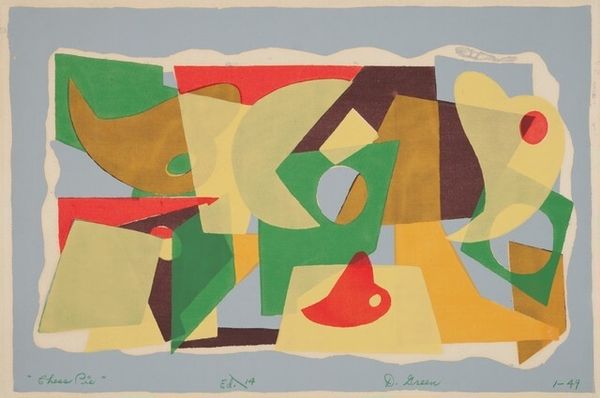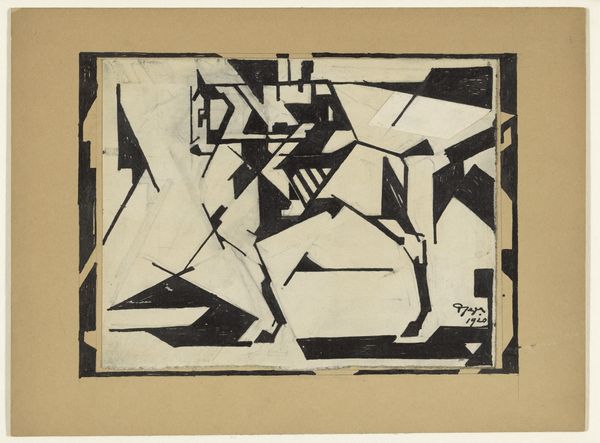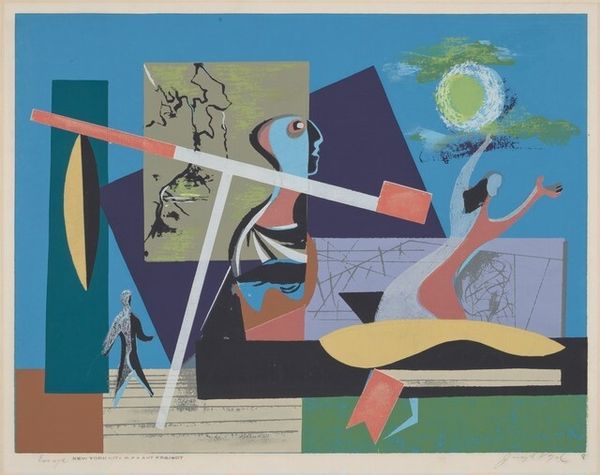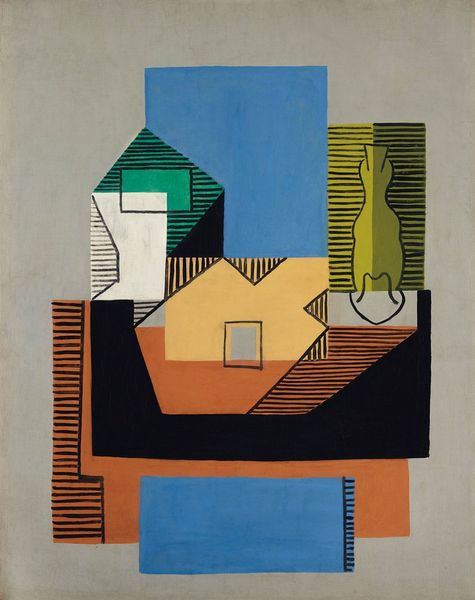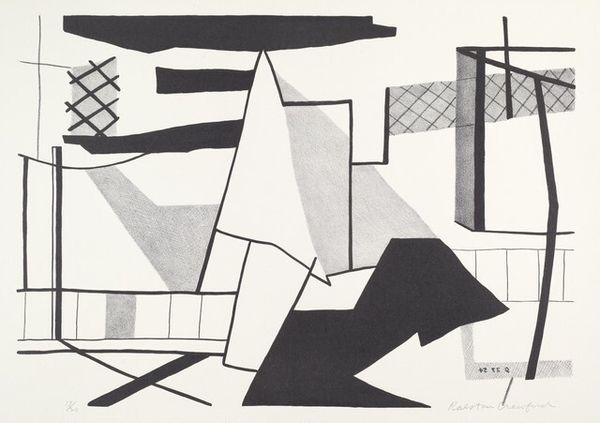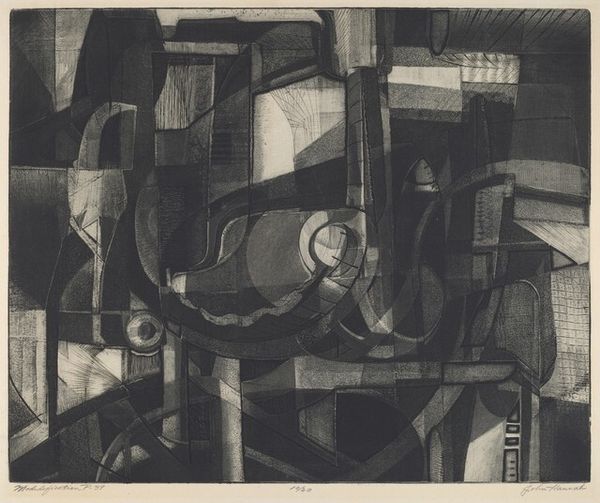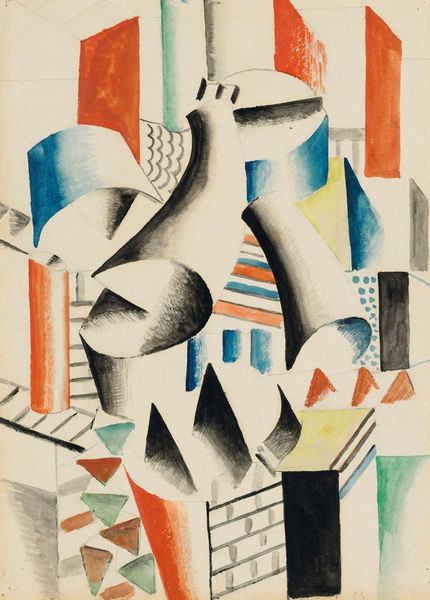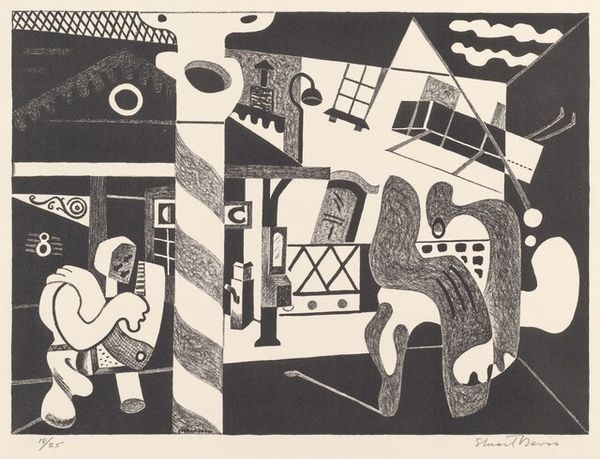
# print
#
geometric
#
abstraction
#
modernism
Dimensions: image: 22.86 × 30.48 cm (9 × 12 in.) sheet: 29.21 × 46.04 cm (11 1/2 × 18 1/8 in.)
Copyright: National Gallery of Art: CC0 1.0
Editor: We are looking at Charles Quest's "Through the Looking Glass" from 1950, a color woodcut. It's got this really interesting interplay of shapes and colors. It strikes me as quite modern, even a bit unsettling with its distorted perspectives. What catches your eye about it? Curator: The "color woodcut" aspect is key here. Let’s not overlook the labor involved in producing such an image in 1950. Quest wouldn’t just conceive of the abstract forms, he would have to physically carve each layer into a woodblock, each block responsible for a single color. Can you imagine the level of precision required for alignment to achieve these compositions? It demands we consider not just the final image, but the means of production, the materials themselves, and the skill, labor, and effort involved. Editor: That's something I hadn't really considered. I was so focused on the aesthetic. But what would compel him to go for such a labor intensive process versus another technique? Curator: The very act of using this particular medium during that specific moment makes it meaningful. In the mid-20th century, the elevation of certain "fine art" mediums like painting sought to sideline printmaking as a form of "craft". Through this work, Quest makes a case that a laborious "craft" like woodcut is just as powerful a tool for artistic expression as painting is. Editor: So, it's about pushing back against art world hierarchies? By emphasizing the materiality, you're saying he's almost democratizing the artistic process? Curator: Precisely. He's reminding us of the value inherent in the labor of creating, of the tangible reality behind the art object. It is not simply a representation, it is the outcome of real physical work with distinct properties, textures, and processes, like the unique grain and imperfections of wood and registration! Editor: That changes my understanding completely. Seeing it as an embrace, or even a celebration, of the material process really adds another layer to appreciate! Curator: Exactly! Hopefully, now you are aware that art always arises in response to social pressures. This makes art not an aesthetic phenomenon but an argument.
Comments
No comments
Be the first to comment and join the conversation on the ultimate creative platform.
